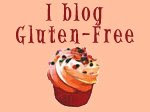Vinny: "So the two youts went in ..."
The Judge: "Ahhh -- what was that word?"
Vinny: "What word your honor?"
The Judge: "Two what?"
Vinny: "Youts? ... Oh I'm sorry ... ... two YOOOUUUTTTHHHS."
From "My Cousin Vinny" (1992)
And I say:
Youts today!
What DO they eat?
Youts today!
What DO they eat?
I was checking out at the local supermarket yesterday, and the cashier (I'm guessing 18-ish in age) held up just about every piece of produce I was purchasing, having no idea what any were.
Just to add to the experience, he was clearly put out that I was buying the "hard" things -- that is, the ones that have to be identified, not just scanned like a bag of potato chips.
OK, I can expect perhaps the rutabaga or the turnip (perhaps, the veggies of an older generation, such as myself?) ... but the parsley? the cabbage? I have, at other times in this same supermarket, been asked to identify the following items for these yout'ful cashiers: zucchini, broccoli, leeks, dill weed, fennel, jicama, green onions, eggplant, bell peppers, yams and cauliflower.
 Aside from my curiosity about their lack of training for their jobs -- I have to wonder: what are they eating at HOME that they view these items as though they've arrived from the Planet Ork?!
Aside from my curiosity about their lack of training for their jobs -- I have to wonder: what are they eating at HOME that they view these items as though they've arrived from the Planet Ork?!In my work, which is marketing research, I'm often called upon to listen to "youts" who are frequent buyers of fast food. Some of these kids (though, trust me, the phenomenon extends way beyond kids) eat at fast food restaurants at least twice a day. Sometimes three times.
I don't have kids, myself. Just 3 grown nephews, who definitely know their food groups -- and a niece who is a rising star as a chef, and knows more about food than I do!
But You Parents! What's going on here? What are you feeding your children, that they've apparently never seen a stalk of broccoli or a sweet potato that doesn't come out of a can and already have marshmallows melted on it? They seem to "get" lettuce and tomato -- I'm fearing likely the only vegetables they recognize, because they are included on a Whopper ...
Great Big Sigh.
















